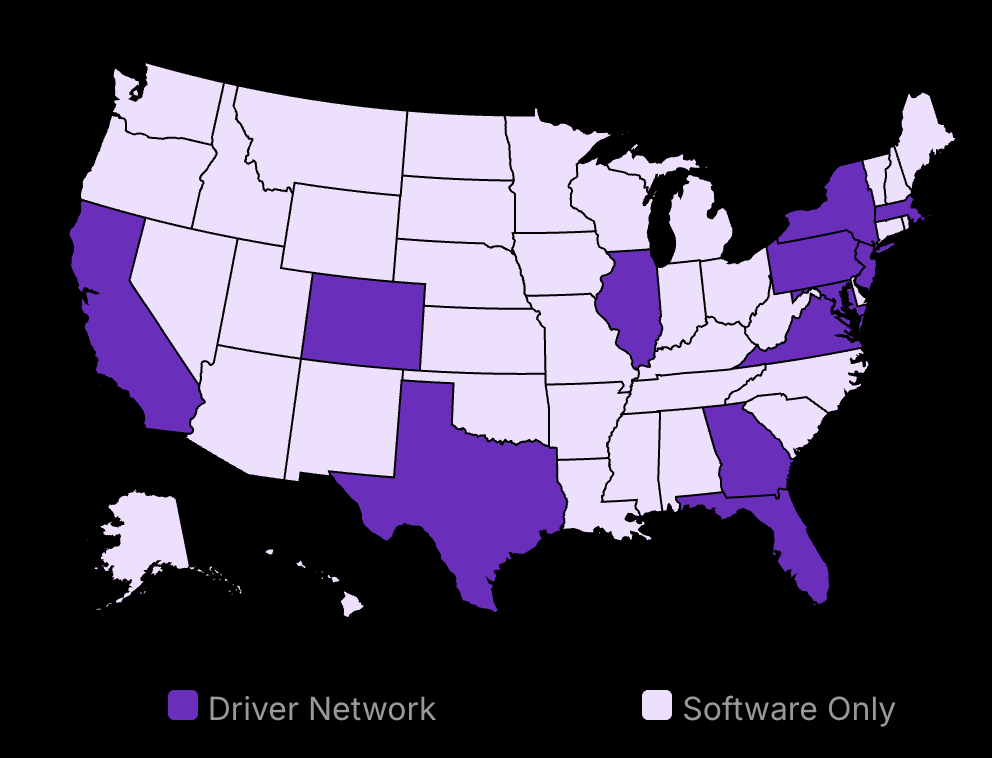Starting a small business idea today is both easier and harder than ever before. Easier because tools, resources, business venture capital, and information are at your fingertips, making it easier to attract new customers. Harder because the competition is fierce, with nearly 65 million small businesses operating in the US alone.
Most people who start their business idea fail within the first 18 months, often lacking a well-defined exit strategy. Not because their business ideas were bad, but because they skipped crucial steps in the beginning, which are essential for building customer loyalty.
A business venture isn’t just a company—it’s a deliberate risk taken with the goal of profit, underscored by a strong business plan. It’s putting something valuable at stake for something potentially more valuable in return, and this includes having accurate financial projections.
The local businesses that thrive in 2025 share common traits: they fill genuine community needs, including lawn care and the services of a professional organizer, while larger companies often overlook these personalized connections.
This guide provides an in-depth look at what a business venture is and how to launch one in your local business community, offering practical, actionable steps tailored to 2025’s specific market conditions, including effective content marketing strategies.
Whether you’re thinking of opening that café you’ve dreamed about, starting a service-based company, or launching a product that solves a local problem, the path to success begins with understanding the fundamentals.
What is a Business Venture?
A business venture is a new enterprise created to generate profit
It can be service-based (like consulting) or product-based (like retail)
Successful business ventures address market gaps or solve problems for specific customers
A business venture is any new enterprise started with the goal of making money. It represents an entrepreneur’s attempt to own a business and create value by offering products or services that customers need or want, often supported by specialized training. Business ventures come in many forms, from small local shops to tech startups, but they all share common traits: risk-taking, investment of resources, and pursuit of profit.
The term “business venture” specifically refers to the early stage of a business where the founder identifies an opportunity and takes action to turn it into a functioning enterprise. These business ventures often start with an idea that addresses a problem or fills a gap in the market, aligning with the wider business goals.
Business ventures differ from hobbies or side projects because they have clear profit goals and business structures. They require careful planning, market research, and financial investment, especially when you need to hire employees. Most importantly, they involve some level of risk – the possibility that business venture capitalists might withdraw support if the business does not show promise.
Example(s) of a Business Venture or Business Plan
Starting a local vegan café or a pet sitting service represents a perfect example of a business venture. The entrepreneur spots a gap in the local food scene – perhaps there are limited plant-based dining options in the area. They then invest time and money to secure a location, purchase basic equipment, develop recipes, hire staff, and market their business. The goal is to serve a specific customer base (vegans and health-conscious diners) while generating profit.
Similarly, opening an eco-friendly retail shop shows how ventures often align with market trends. This type of business responds to growing consumer interest in sustainable products. The owner sources environmentally friendly items, creates a retail space that reflects their values, and builds relationships with angel investors who share their commitment to sustainability, while also planning for paid advertising. They take a financial risk based on their belief that enough local customers will support their mission.
Other examples of business ventures include:
A mobile app development company
A home cleaning service
A specialty bakery
A professional consulting practice
An online education platform
What makes each of these a business venture is the combination of opportunity identification, resource investment, and risk acceptance in pursuit of profit.
Types of Business Ventures For Cleaning Services, Food Truck, Pet Sitting, etc.
Business ventures generally fall into two main categories: service-based and product-based. Understanding which category your venture belongs to helps determine appropriate business models, startup costs, and the need for a formal business structure, operational requirements.
Service-based business ventures provide expertise, skills, or labor to solve problems or fulfill needs. Examples include consulting firms, cleaning services, repair shops, and hair salons.
Product-based business ventures focus on creating, manufacturing, or selling physical or digital items, including products specifically designed for pet owners. Examples include retail stores, manufacturing businesses, software companies, and food trucks that cater to local tastes. These businesses invest in inventory or product development.
Many successful business ventures combine elements of both categories. A tech company might sell software products while also offering implementation services. A restaurant sells food products but also provides the service of preparing and serving meals.
Beyond these basic categories, business ventures can be classified by:
Ownership structure:
Sole proprietorships (single owner)
Partnerships (multiple owners)
Corporations (separate legal entity)
Cooperatives (owned by members)
Scale and growth potential:
Lifestyle businesses (designed to support the owner’s desired lifestyle)
Scalable startups (designed for rapid growth)
Social enterprises (focus on both profit and social impact)
Franchises (replicating established business models)
Innovation level:
Revolutionary business ventures (creating new markets)
Evolutionary business ventures (improving existing offerings)
Imitative business ventures (copying successful models in new areas)
Service-Based Business Ventures
Service-based business ventures involve selling expertise, skills, knowledge, or labor rather than physical products. These businesses help customers solve problems, save time, gain knowledge, or achieve specific outcomes. Common examples include consulting services, cleaning companies, educational tutoring, event planning, and professional services like accounting or legal work.
The key advantage of service-based business ventures is their typically lower startup costs, allowing entrepreneurs to begin with enough money to sustain operations during the early stage. Without inventory or manufacturing equipment to purchase, entrepreneurs can often begin with minimal investment and low overhead costs. The key advantage of service-based business ventures is their typically lower startup costs, allowing entrepreneurs to begin with enough money to sustain operations during the early stage as the business grows. A house cleaning service might start with basic supplies and transportation, possibly utilizing a reliable vehicle for efficient service. A consulting practice might need little more than a computer, phone, and website.
“The secret of business is to know something that nobody else knows,” said shipping magnate Aristotle Onassis, highlighting how service businesses often sell specialized knowledge or skills.
Service business ventures face unique challenges and advantages:
Advantages:
Lower initial investment requirements
Ability to start part-time while maintaining other employment
Flexible scaling (add clients as capacity allows)
Typically have higher profit margins than product businesses
Potential for recurring revenue through ongoing service relationships
Challenges:
Income is limited by available time and personnel
Difficulty standardizing service quality
Challenges in valuation and eventual sale of the business
Need for constant client acquisition
Potential for burnout when the owner is the primary service provider
To launch a successful service business venture, entrepreneurs should focus on:
Clearly defining their service offerings and scope
Establishing pricing models that reflect the value provided
Building systems to deliver consistent quality
Developing strategies to scale beyond the founder’s capacity
For example, a local tax preparation service might start with the founder handling all clients to maintain full control over the operation. As the business grows, they could train employees to handle routine tax returns while the founder focuses on complex cases. Eventually, they might develop proprietary software or processes that allow for even greater scaling.
Product-Based Business Ventures For Market Need
Product-based business ventures focus on creating, manufacturing, distributing, or selling physical or digital goods. These businesses, such as a consulting business, offer tangible items like a food truck or downloadable items that customers purchase and own. Examples include retail stores, personal trainer e-commerce sites, manufacturing companies, software developers, and food production businesses.
Unlike service businesses, product-based ventures typically require a more significant upfront investment. This includes costs for initial inventory, manufacturing equipment, product development, storage space, and distribution systems. A retail clothing store needs to purchase inventory before making a single sale. A food product company must invest in ingredients, packaging, and possibly manufacturing equipment to cater to customers who speak multiple languages.
Product-based ventures face distinct challenges and benefits:
Advantages:
Income is not directly limited by the founder’s time
Potential for passive or semi-passive revenue
Clearer paths to scaling through increased production
Potential for protection through patents, trademarks, or copyrights
More straightforward valuation models for business sales
Challenges:
Higher initial investment requirements
Inventory management and storage costs
Production quality control concerns
Supply chain dependencies
Potentially lower profit margins than service businesses
Starting a product-based venture requires careful attention to:
Product design and development
Manufacturing or sourcing relationships
Inventory management systems
Distribution channels
Pricing strategy that accounts for all costs
For example, an entrepreneur launching a local handmade soap business would need to perfect their recipes, source ingredients, create packaging, establish a production process, build inventory, and then find retail partners or direct sales channels. Each step requires investment before revenue begins.
Digital product businesses (like software, e-books, or online courses) represent a hybrid model with lower production costs than physical products but similar scaling potential. These ventures can often start with lower investment but still face product development costs.

27% higher customer satisfaction
Professional delivery features:
- Real-time GPS tracking
- Automated ETA updates
- Delivery confirmation photos
- 27% higher delivery satisfaction
Local Market Analysis for Startups
Market analysis identifies what local customers need and what competitors offer.
Understanding your target audience is crucial for business success
Data collection through surveys and existing reports provides valuable insights
Starting a business venture requires understanding your local market dynamics and focusing on business development. A thorough market analysis helps you identify potential customers, assess competition, and spot opportunities for growth. This foundation determines whether your business idea, such as tutoring services, can survive and thrive in your local area.
Small business failures often stem from insufficient market research. According to the Small Business Administration, about 20% of small businesses fail within a few months of opening, and inadequate market analysis is a leading cause. Knowing your market isn’t optional—it’s essential for understanding how many clients you need to sustain your business.
Many entrepreneurs rush to launch without validating their business concept. This approach is like building a house without checking the ground beneath it. Market analysis is your ground survey, revealing whether your idea has solid support or if you need to adjust your plans.
Conducting Market Research For a Better Marketing Strategy
Market research involves collecting and analyzing information about your potential customers and competitors, including insights from their cover letters. For local startups, this research should focus specifically on your geographic area and the unique characteristics of your community, including trends on social media.
You can start by identifying direct competitors in your area. These are businesses offering similar products or services to your target customers. It is best to visit these establishments as a customer to experience their offerings firsthand. Note their pricing strategies, customer service quality, and overall business approach. A competitive analysis spreadsheet can help organize this information. Track factors like business hours, pricing, unique selling points, and customer reviews.
For example, if you’re planning to open a coffee shop, spend time in local cafés observing customer flow throughout the day, menu offerings, and price points. Pay attention to what customers order most frequently and what seems to be missing from current offerings, such as a social media management service. This hands-on research provides insights no online research can match.
Secondary research involves analyzing existing data sources. Local chambers of commerce often provide market reports specific to your area. Industry associations publish trend reports that can help you understand the broader context. The U.S. Census Bureau offers demographic data that can help you understand the makeup of your local community.
Online reviews of existing businesses reveal what customers value and what frustrates them. These reviews are gold mines of information about unmet needs in the market. For instance, if multiple reviews mention long wait times at local restaurants, this might signal an opportunity for a business that offers quick service without sacrificing quality.
Understanding Current Market Trends For Your Own Business Venture
Current market trends shape customer expectations and preferences. For local businesses, both national trends and local factors influence your market.
National trends like increased demand for sustainable products, preference for digital payment options, or growing interest in health-focused offerings affect businesses across the country. However, these trends manifest differently in different communities. For example, sustainability might be a major selling point in some areas but less important in others.
Local trends are more specific to your community. These might include economic shifts due to major employers entering or leaving the area, changing demographics, or local regulations affecting businesses. For instance, a town experiencing population growth from young families will have different business needs than one with an aging population.
Social media platforms provide real-time insights into local trends. Facebook groups, Nextdoor discussions, and local Instagram hashtags can reveal what residents are talking about and what they’re seeking. These platforms often capture needs before they become obvious business opportunities.
Identifying Opportunities with Enough Money
Opportunity identification is where market research transforms into business strategy. This process involves finding gaps between what customers want and what existing businesses provide.
Market gaps come in various forms. They might be completely unmet needs, where no local business addresses a particular problem. For example, a town might lack child-friendly dining options despite having many young families. Gaps might also appear as underserved segments, where existing offerings don’t fully meet customer expectations in terms of quality, convenience, or price.
Price point gaps represent opportunities to offer similar products at different price tiers. If all local coffee shops position themselves as premium options, there might be an opportunity for a more affordable alternative. Conversely, if only budget options exist, a premium service might find a receptive audience.
Service quality gaps emerge when existing businesses fail to deliver consistent customer experiences. Negative reviews often highlight these gaps. If customers frequently complain about slow service, poor communication, or lack of attention to detail, these pain points represent business opportunities.
Geographic gaps occur when services are concentrated in certain areas, leaving other neighborhoods underserved. This is particularly relevant in larger towns or cities where travel time becomes a factor in customer decisions.
Considering Unfulfilled Customer Needs
Unfulfilled customer needs often represent the most promising business opportunities. These needs might be obvious or hidden, but either way, they signal potential demand for new offerings.
Explicit needs are those that customers can clearly articulate, such as requests for more engaging content. These might appear in community forums, social media requests (“Does anyone know where I can find…?”), or conversations with residents. For example, people might openly discuss the lack of late-night dining options or affordable fitness facilities in your area.
Implicit needs are those that customers experience but don’t necessarily express directly. These are often discovered through observation and deeper conversations. For instance, parents might not explicitly ask for a café with a play area, but observation might reveal their stress when trying to enjoy coffee while managing children.
The way customers currently solve problems reveals valuable insights. These “workarounds” point to business opportunities. If people regularly drive to neighboring towns for certain products or services, this indicates unmet local demand. Similarly, if customers are creating DIY solutions or adapting existing products, they’re signaling needs that could be better addressed by a dedicated business.
In identifying unfulfilled needs, consider not just what products or services are missing, but also how existing offerings could be improved. A 2024 study published in the Journal of Small Business Management found that 38% of successful local businesses focused not on entirely new concepts but on significant improvements to existing services.
When evaluating unfulfilled needs, assess both the size of the potential market and the intensity of the need. Some needs might affect a small group of people, but be so important to them that they’re willing to pay premium prices for solutions. Others might be minor irritations felt by a large population, representing opportunities for high-volume, lower-margin businesses.
How do you start a business venture? The process begins with a thorough market analysis to validate your business concept and identify potential challenges that may arise. Starting without understanding your local market is like sailing without a compass—you might move forward, but with a flexible schedule, you’re unlikely to reach your destination efficiently. The most successful ventures identify specific market gaps, understand their target customers in detail, and position themselves to address unfulfilled needs.
What is the best business venture to start? There’s no universal answer, but the best venture for you exists where market opportunity meets your skills and interests. Your local market analysis will reveal opportunities specific to your community, while your assessment will determine which of these opportunities align with your capabilities and goals.
Business Ideas and Venture
Starting a business venture in your local community and taking an active role isn’t just about profits—it’s about creating something meaningful. Now, you have the tools to begin this journey: understanding business types, analyzing your market, leveraging your professional background, recognizing community benefits, taking courses, and considering content creation and marketing strategies, alongside a graphic design business or professional organizing service, among practical steps to launch your idea.
Remember that the best business ventures align with both your skills and local needs. Your passion, combined with market demand and understanding of personal and business finances, creates a strong foundation for success. When you build a business that serves your community, you create jobs, strengthen the local economy, and establish meaningful connections.
As you move forward with your 2025 business plans, keep sustainability and community support at the center of your strategy, especially if your product is in high demand. The relationships you build with local suppliers, customers, and fellow entrepreneurs will become your most valuable assets, especially if you utilize high-speed internet to facilitate communication.
Your business venture is more than a transaction—it’s a contribution to your community’s future. Take that first step: refine your idea, write your business plan, and connect with your local business network. The community is waiting for what you’ll create.
What local need will your business venture address first to attract customers?






























